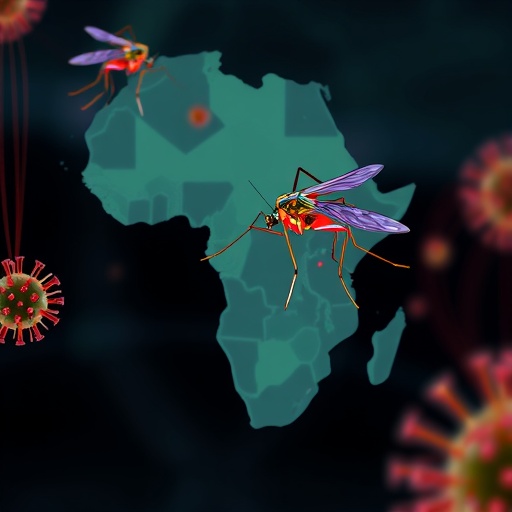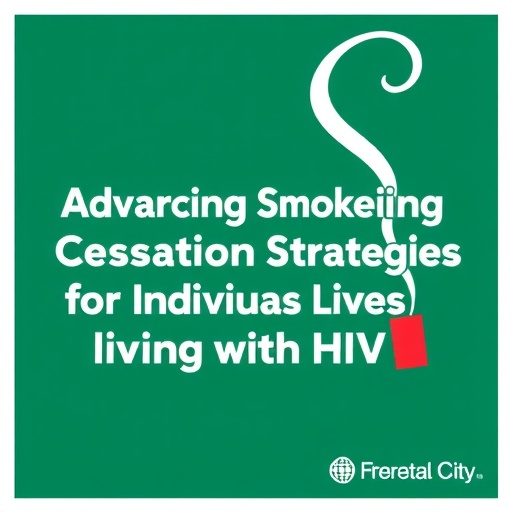In a groundbreaking study poised to reshape our understanding of Zika virus transmission, researchers have unveiled the complex genetic interplay within African strains of the virus that enhances their ability to spread via mosquito vectors. While Zika virus has been a notorious global health concern primarily due to its rapid dissemination and devastating impacts, particularly in the Americas, this new research elucidates previously obscure viral mechanisms driving efficient transmission in African lineages, challenging long-standing assumptions in the field.
For years, African Zika virus strains were considered less adept at spreading through mosquito populations compared to their Asian and American counterparts. This new comprehensive investigation, led by Torii, Lord, Lavina, and colleagues, disrupts that narrative by demonstrating that a constellation of viral genetic factors—rather than single mutations—works synergistically to optimize the virus’s ability to infect and propagate within mosquito hosts. This polygenic framework stands in contrast to earlier models that focused on the influence of isolated mutations, particularly those enhancing human pathogenicity.
Central to the research is the revelation that multiple viral genes collectively facilitate replication efficiency and vector competence. Using an integrative approach combining deep sequencing, reverse genetics, and vector competence assays, the team dissected how specific combinations of viral alleles operate in concert to enhance mosquito infection rates, dissemination within the vector’s body, and ultimately successful transmission to new hosts. These polygenic viral influences appear essential for overcoming intrinsic barriers within Aedes mosquitoes, the primary vectors responsible for Zika virus spread.
The study harnessed advanced genomic tools to unravel the intricate architecture of viral populations circulating in African ecosystems. By comparing viral genomes derived from field-collected mosquitoes and infected humans, the researchers identified a suite of mutations distributed across structural and non-structural genes implicated in virus-host interaction dynamics. Crucially, experimental infections in Aedes aegypti and Aedes albopictus mosquitoes established that these mutation combinations significantly increased viral load within mosquito midguts and salivary glands, critical tissues for successful transmission.
This polygenic model advances the understanding of Zika virus evolution, highlighting how natural selection favors multi-locus combinations that collectively enable the virus to adapt optimally to its vector environment. Beyond single amino acid changes, the concerted effects of several genetic alterations fine-tune viral replication kinetics and immune evasion strategies inside mosquitoes. Such complexity underscores the limitations of reductionist studies that isolate single mutations without accounting for epistatic interactions, thereby revealing a more nuanced evolutionary landscape.
Moreover, the findings bear critical implications for public health and vector control strategies. Recognizing that African Zika strains possess inherent genetic capabilities for efficient mosquito transmission counters earlier beliefs that outbreaks in Africa might remain relatively contained. This improved viral transmission potential could facilitate the emergence of explosive epidemics if environmental or demographic conditions become favorable. Consequently, surveillance programs and predictive models must integrate polygenic viral characteristics to more accurately anticipate outbreak risks.
Importantly, the research also sheds light on the potential for viral adaptation in response to vector population shifts. Given that Aedes mosquito species vary in their susceptibility to Zika virus infection, the virus’s ability to leverage multiple genetic factors may enable it to infect a broader range of vector species or adapt rapidly to changing ecological pressures. Understanding these intricate viral-vector genetic interactions could inform next-generation vector control technologies, including gene drive systems tailored to disrupt vector competence.
At the molecular level, the identified genetic variants span viral proteins associated with replication complexes, membrane fusion machinery, and immune modulation. For instance, changes in the NS1 and NS5 non-structural proteins were linked to enhanced replication efficiency and evasion of mosquito antiviral responses. Simultaneously, modifications in envelope glycoproteins appear to increase viral attachment and entry into mosquito cells, expediting the initial stages of infection. Collectively, these effects orchestrate an optimized transmission phenotype.
In-depth experimental infection assays revealed that virions harboring polygenic mutation profiles exhibited accelerated dissemination kinetics within mosquitoes compared to ancestral strains. This rapid spread enables the virus to reach the salivary glands sooner, shortening the extrinsic incubation period—the critical window between mosquito infection and the ability to transmit the virus to humans. Such a reduction amplifies transmission potential during mosquito feeding cycles, intensifying outbreak dynamics under natural conditions.
The study’s integrative approach also involved computational modeling to predict how individual and combined mutations influence the fitness landscape of the virus within vectors. These models emphasize the structural and functional constraints dictating which mutational combinations are viable, and how these combinations confer transmission advantages. Such predictive frameworks may become invaluable for forecasting viral evolution trajectories amid ongoing ecological and environmental change.
Significantly, by focusing on African Zika virus strains, this research highlights the longstanding underappreciation of genetic diversity’s role in vector-borne disease epidemiology. Historically, scientific attention has skewed towards outbreaks outside Africa, where the virus’s impact gained global prominence. This investigation redirects focus to the continent of origin, offering critical insights into the foundational viral factors shaping transmission ecology and pathogenesis.
This paradigm-shifting work not only broadens the foundational virology of Zika virus but also sets a precedent for considering polygenic influences in RNA virus transmission more generally. Viruses commonly revered for their rapid evolution may harness coordinated genetic changes rather than single “super mutations” to enhance transmissibility and fitness. Such recognition necessitates refined experimental and surveillance methodologies equipped to capture complex genetic architectures affecting viral behavior in vectors and hosts.
Looking forward, the implications of polygenic viral factors extend to vaccine design and therapeutic development. Understanding how multiple viral loci collectively impact virus-vector interactions may reveal novel antiviral targets that disrupt transmission cycles. Moreover, this knowledge can enhance molecular diagnostics by identifying genetic signatures predictive of heightened transmissibility, guiding public health interventions more strategically.
Overall, this pioneering study propels the Zika virus research field into a new era of complexity appreciation, where genetic networks—not isolated mutations—define viral transmission capacity. The multifaceted genetic underpinnings uncovered provide a robust framework for reframing vector-borne disease dynamics and underscore the necessity of integrative, systems-level approaches to studying virus evolution and epidemiology in an increasingly interconnected world.
Subject of Research: Transmission genetics of African Zika virus strains and their interaction with mosquito vectors
Article Title: Polygenic viral factors enable efficient mosquito-borne transmission of African Zika virus
Article References:
Torii, S., Lord, J.S., Lavina, M. et al. Polygenic viral factors enable efficient mosquito-borne transmission of African Zika virus. Nat Commun 16, 9594 (2025). https://doi.org/10.1038/s41467-025-64627-0
Image Credits: AI Generated
Tags: African Zika virus transmissiongenetic factors in virus spreadgroundbreaking Zika researchimplications for global healthinnovative research methodologies in virologymosquito population dynamicsmosquito vector competencepolygenic mechanisms of Zikaviral mutations and pathogenicityviral replication efficiencyZika virus genetic interplayZika virus strains comparison





